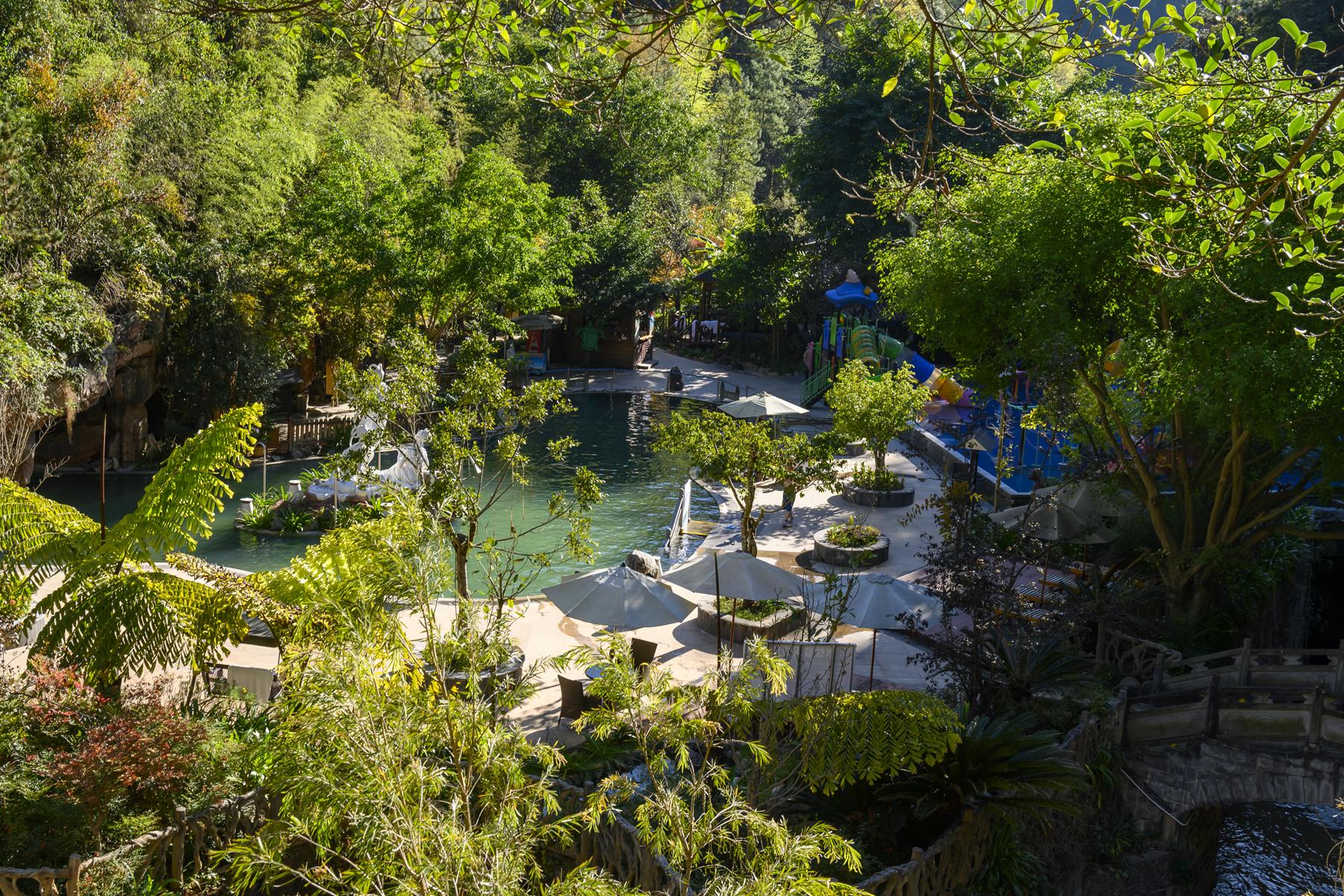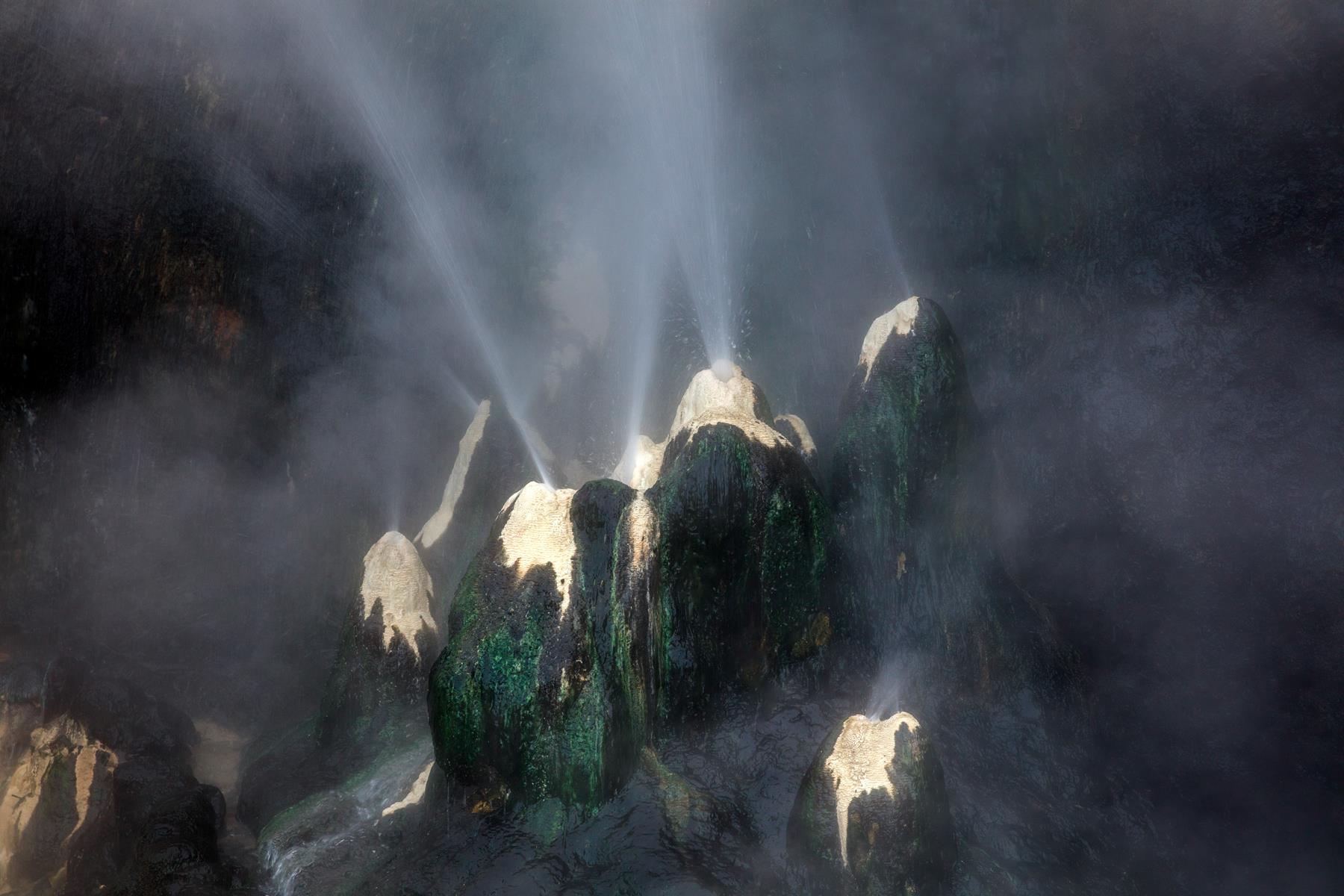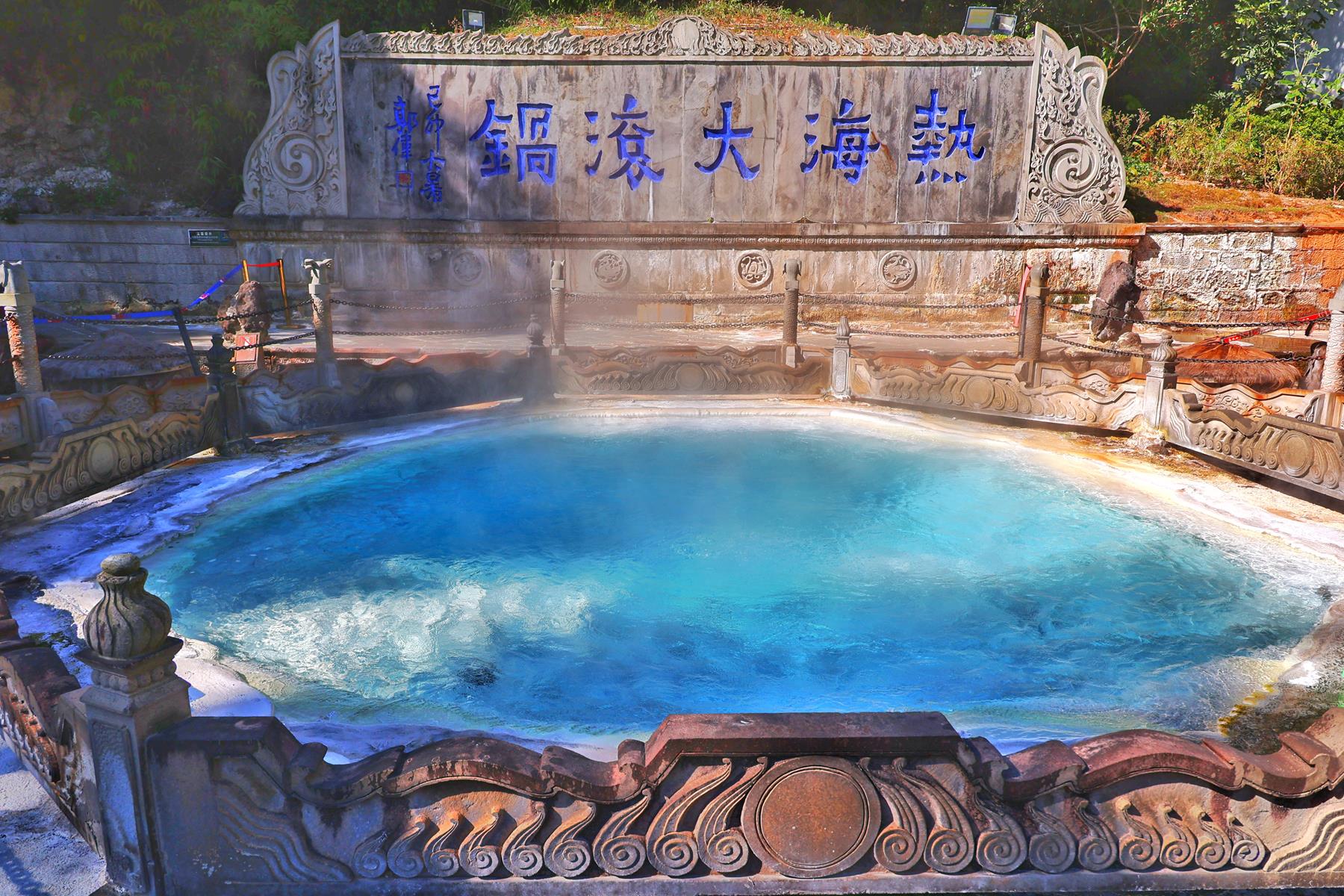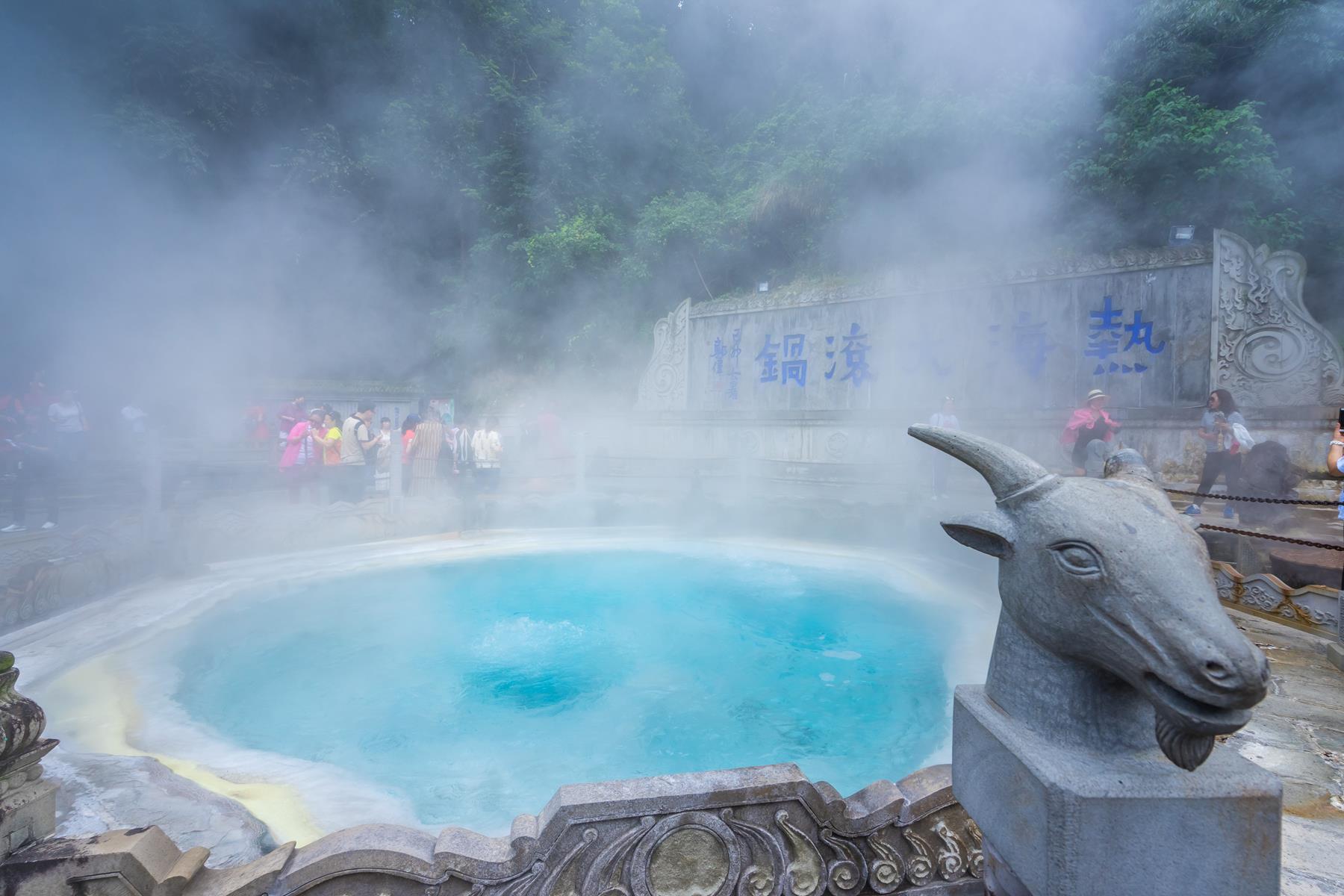Tengchong Hot Springs




When you visit Tengchong, experiencing the area’s renowned hot springs is a must. For the people of Tengchong, they are considered a heavenly gift. Across the 19 townships (streets) covering approximately 5,845 square kilometres of land, hot springs are almost everywhere. According to incomplete statistics, Tengchong currently has 74 hot spring resources with temperatures above 21°C.
These natural hot springs have been flowing since prehistoric times, year after year. Starting from early ancestors, the stories of happiness around hot spring baths have been passed down through generations in Tengchong. The love for hot springs among the people of Tengchong has become a spiritual sustenance, a cultural phenomenon, or a way of life that has continued to this day.
During the winter season, after storing crops, slaughtering pigs, and preparing bedding and utensils, villagers from miles around gather in nearby hot spring areas. They set up camps, establish hot spring tribes, become "hot spring therapy guests," and begin a season of rest and rejuvenation. They camp around the hot spring sources, staying for short periods of three to five days or long stays of one to two months. Throughout the winter, wherever there are hot springs becomes a paradise of happiness.
The Ming Dynasty's great traveller, Xu Xiake, conducted on-site investigations of Tengchong's Rehai Hot Springs, Dadong Hot Springs, and Laxing Hot Springs, among others, with detailed written descriptions.
Tengchong's hot springs are not only numerous and diverse in type, but they also come in various forms, including boiling springs, fountains, intermittent springs, drumming springs, and hot gas fields. There are also geothermal waterfalls, underground rivers, geothermal caves, geothermal valleys, and colourful spring deposits composed of silica, calcium, and salt.
Based on the main components of minerals in the hot springs, there are carbonate springs, silicic acid springs, sulfur springs, selenium-rich springs, oxygen springs, and silver springs, among others. It is no exaggeration to say that Tengchong is the largest, most diverse, and geographically varied natural hot spring geological museum in China and even the world.
According to incomplete statistics, Tengchong has a total of 66 hydrothermal activity areas (warm, hot, and boiling springs, excluding geothermal wells). There are 74 hot spring resource points with temperatures above 21°C, including four places with spring (well) temperatures ranging from 21°C to 25°C, 20 with warm water temperatures from 25°C to 40°C, 37 with warm water temperatures from 40°C to 60°C (including 5 geothermal flowing wells), and 13 places with hot water temperatures ≥60°C (including 1 geothermal flowing well).
Among them, the most famous is the Rehai Hot Springs, which is the second-largest hot field in China, with a maximum water temperature of 102 degrees Celsius. It is the best place for geothermal therapy in China. Here, you can see unique geothermal landscapes and hot springs gushing from underground!
Tengchong Rehai is located about 10 kilometres southwest of Tengchong City. The core area of Rehai, centered around a large boiling pot, covers about one square kilometre and has been rated as a national 5A-level scenic area. However, the actual area of the entire Rehai is about nine square kilometres.
Rehai Hot Springs in Tengchong: A Natural Wonder
Rehai boasts plentiful gas springs and hot springs, with over 80 locations, including 10 hot spring groups with temperatures exceeding 90°C. Due to Rehai's high elevation of approximately 1600 metres, the boiling point here is only about 94.5 degrees Celsius, which is different from the commonly known boiling point of 100 degrees Celsius. Therefore, only the "Big Boiling Pot" hot spring with a bottom temperature of 96 degrees Celsius presents the spectacular and continuous phenomenon of rolling and steaming.
The Big Boiling Pot is the final destination of the Rehai scenic area and is also the most popular place. The hot spring, with a diameter of six metres, boils and steams, and it is the hottest spot in the entire area, reaching a maximum temperature of 96.7 degrees Celsius. Hot water bubbles up from the bottom of the spring, surrounded by water mist, and the smell of sulfur is in the air, creating quite a spectacle.
Next to it, you can find hot spring eggs (five yuan for two), peanuts, and other items for sale. There are also two large "steam boilers" where visitors can experience the joy of steaming and cooking eggs themselves (available outside the scenic area for five yuan for four eggs). The saying "Yunnan's Eighteen Wonders, selling eggs on a string" originated from here.
Rehai's hot springs are renowned for their colourful emergence from the ground. Rehai encompasses almost all forms of natural hot springs: hot spring vents, steam blocks, hot boiling springs, intermittent springs, fountains, spring deposits, toxic gas springs, and more. From the perspective of naming based on hot spring culture, there are wonders like the Big Boiling Pot, Pearl Spring, Pregnancy Well, Toad's Mouth, and Beauty Pool.
Not experiencing the hot springs is equivalent to not visiting Tengchong! As the only area in mainland China where volcanic geothermal hot springs coexist, Tengchong's hot springs, scattered beneath a millennium-old volcano, have earned the reputation of being the "World Hot Spring Pilgrimage Site."
Tengchong's hot springs are of volcanic origin, mainly sulfur springs, and they concentrate 10 out of the 12 globally recognised valuable spring qualities for therapeutic purposes. Different hot springs have different effects on the body. Whether it's Rehai Hot Springs, Yuechun Hot Springs, Bailian Hot Springs, Sakura Valley Hot Springs, Hehua Hot Springs, Dongshan Hot Springs, or others, visitors can choose according to their specific needs.










